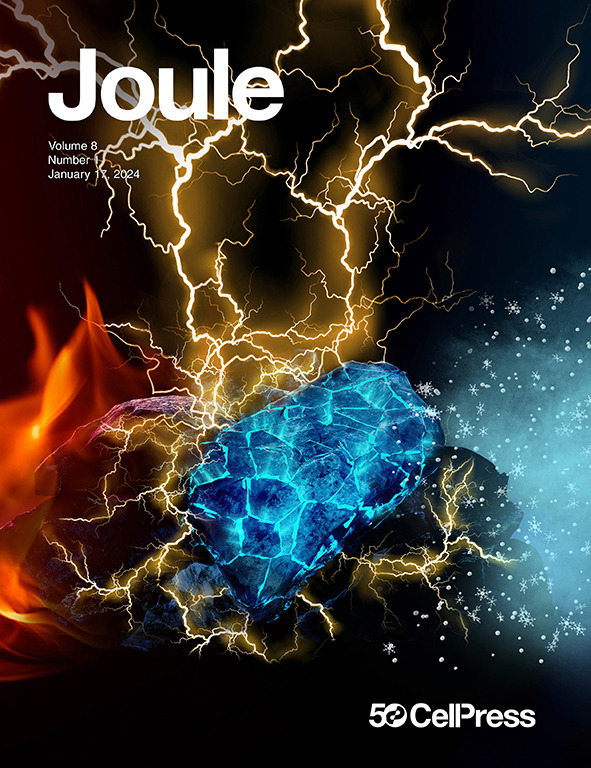TEMPO bulk passivation boosts the performance and operational stability of rapid-annealed FAPI perovskite solar cells
IF 35.4
1区 材料科学
Q1 CHEMISTRY, PHYSICAL
引用次数: 0
Abstract
In this work, we present a high-performance, stable formamidinium lead iodide (FAPI) perovskite solar cell (PSC) achieved through the use of 2,2,6,6-tetramethylpiperidinyloxyl (TEMPO) bulk passivation and rapid photonic annealing. Utilizing flash infrared annealing (FIRA), we fabricated TEMPO-FAPI PSCs with a power conversion efficiency (PCE) exceeding 20%, exceeding the prior state of the art for this process. The TEMPO additive promotes enhanced crystallization dynamics, yielding films with improved homogeneity and reduced defect densities, as confirmed by photoluminescence (PL), profilometry, and positron annihilation lifetime spectroscopy (PALS). Stability testing under ISOS protocols demonstrated that the TEMPO-FAPI devices retained over 90% of their initial PCE after 4,296 h of operational and thermal stress, showing unprecedented longevity for a rapid processing technique. TEMPO’s primary effect on passivating grain boundaries and surface defects is evidenced by a significantly reduced non-radiative recombination rate and low defect density, establishing this molecule as a promising additive for scalable, durable FAPI PSC manufacturing.


TEMPO本体钝化提高了快速退火FAPI钙钛矿太阳能电池的性能和运行稳定性
在这项工作中,我们提出了一种高性能,稳定的碘化甲醛铅(FAPI)钙钛矿太阳能电池(PSC),采用2,2,6,6-四甲基胡椒酰氧基(TEMPO)体钝化和快速光子退火。利用闪光红外退火(FIRA),我们制造了功率转换效率(PCE)超过20%的TEMPO-FAPI psc,超过了该工艺的现有技术水平。通过光致发光(PL)、轮廓术和正电子湮灭寿命谱(PALS)证实,TEMPO添加剂促进了结晶动力学的增强,产生了均匀性改善和缺陷密度降低的薄膜。iso协议下的稳定性测试表明,TEMPO-FAPI设备在4296小时的运行和热应力后保持了90%以上的初始PCE,对于快速处理技术来说,表现出前所未有的寿命。TEMPO对钝化晶界和表面缺陷的主要作用是通过显著降低非辐射重组率和低缺陷密度来证明的,这使该分子成为可扩展、耐用的FAPI PSC制造的有前途的添加剂。
本文章由计算机程序翻译,如有差异,请以英文原文为准。
求助全文
约1分钟内获得全文
求助全文
来源期刊

Joule
Energy-General Energy
CiteScore
53.10
自引率
2.00%
发文量
198
期刊介绍:
Joule is a sister journal to Cell that focuses on research, analysis, and ideas related to sustainable energy. It aims to address the global challenge of the need for more sustainable energy solutions. Joule is a forward-looking journal that bridges disciplines and scales of energy research. It connects researchers and analysts working on scientific, technical, economic, policy, and social challenges related to sustainable energy. The journal covers a wide range of energy research, from fundamental laboratory studies on energy conversion and storage to global-level analysis. Joule aims to highlight and amplify the implications, challenges, and opportunities of novel energy research for different groups in the field.
 求助内容:
求助内容: 应助结果提醒方式:
应助结果提醒方式:


